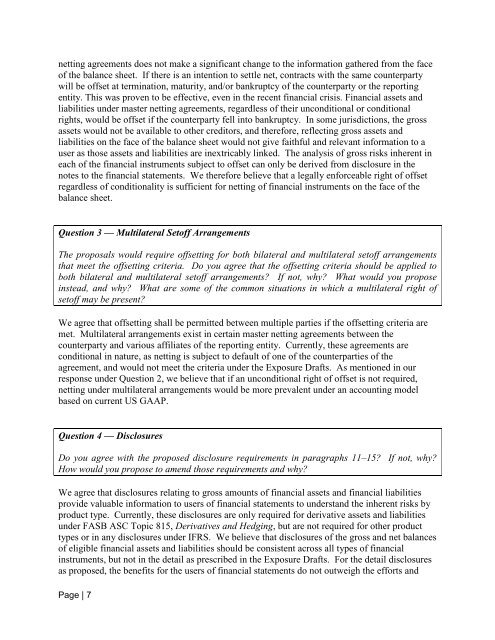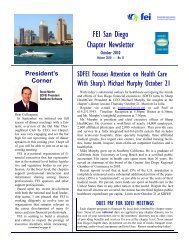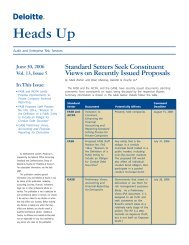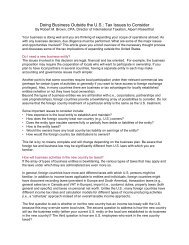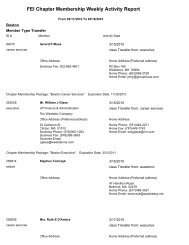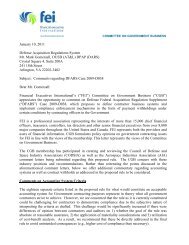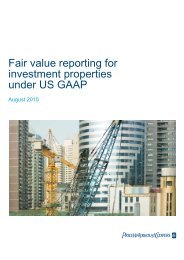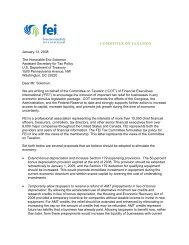FEI CCR Balance Sheet Offsetting Comment Letter - Financial ...
FEI CCR Balance Sheet Offsetting Comment Letter - Financial ...
FEI CCR Balance Sheet Offsetting Comment Letter - Financial ...
You also want an ePaper? Increase the reach of your titles
YUMPU automatically turns print PDFs into web optimized ePapers that Google loves.
netting agreements does not make a significant change to the information gathered from the face<br />
of the balance sheet. If there is an intention to settle net, contracts with the same counterparty<br />
will be offset at termination, maturity, and/or bankruptcy of the counterparty or the reporting<br />
entity. This was proven to be effective, even in the recent financial crisis. <strong>Financial</strong> assets and<br />
liabilities under master netting agreements, regardless of their unconditional or conditional<br />
rights, would be offset if the counterparty fell into bankruptcy. In some jurisdictions, the gross<br />
assets would not be available to other creditors, and therefore, reflecting gross assets and<br />
liabilities on the face of the balance sheet would not give faithful and relevant information to a<br />
user as those assets and liabilities are inextricably linked. The analysis of gross risks inherent in<br />
each of the financial instruments subject to offset can only be derived from disclosure in the<br />
notes to the financial statements. We therefore believe that a legally enforceable right of offset<br />
regardless of conditionality is sufficient for netting of financial instruments on the face of the<br />
balance sheet.<br />
Question 3 — Multilateral Setoff Arrangements<br />
The proposals would require offsetting for both bilateral and multilateral setoff arrangements<br />
that meet the offsetting criteria. Do you agree that the offsetting criteria should be applied to<br />
both bilateral and multilateral setoff arrangements? If not, why? What would you propose<br />
instead, and why? What are some of the common situations in which a multilateral right of<br />
setoff may be present?<br />
We agree that offsetting shall be permitted between multiple parties if the offsetting criteria are<br />
met. Multilateral arrangements exist in certain master netting agreements between the<br />
counterparty and various affiliates of the reporting entity. Currently, these agreements are<br />
conditional in nature, as netting is subject to default of one of the counterparties of the<br />
agreement, and would not meet the criteria under the Exposure Drafts. As mentioned in our<br />
response under Question 2, we believe that if an unconditional right of offset is not required,<br />
netting under multilateral arrangements would be more prevalent under an accounting model<br />
based on current US GAAP.<br />
Question 4 — Disclosures<br />
Do you agree with the proposed disclosure requirements in paragraphs 11–15? If not, why?<br />
How would you propose to amend those requirements and why?<br />
We agree that disclosures relating to gross amounts of financial assets and financial liabilities<br />
provide valuable information to users of financial statements to understand the inherent risks by<br />
product type. Currently, these disclosures are only required for derivative assets and liabilities<br />
under FASB ASC Topic 815, Derivatives and Hedging, but are not required for other product<br />
types or in any disclosures under IFRS. We believe that disclosures of the gross and net balances<br />
of eligible financial assets and liabilities should be consistent across all types of financial<br />
instruments, but not in the detail as prescribed in the Exposure Drafts. For the detail disclosures<br />
as proposed, the benefits for the users of financial statements do not outweigh the efforts and<br />
Page | 7


